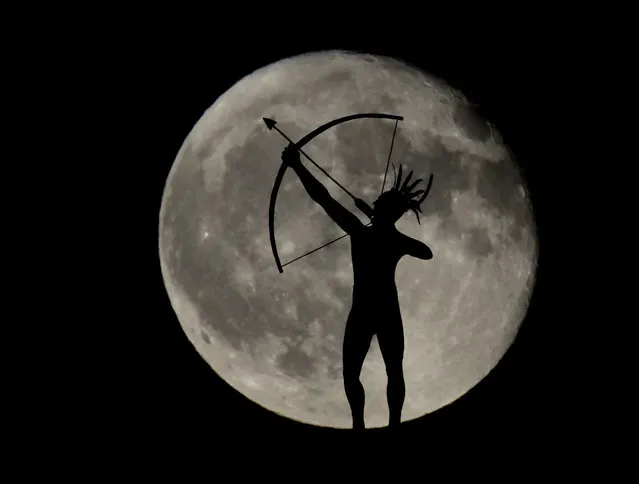
A waning full moon rises behind a statue of a Kansa Indian on top of the Kansas Statehouse Saturday, September 17, 2016, in Topeka, Kan. (Photo by Charlie Riedel/AP Photo)
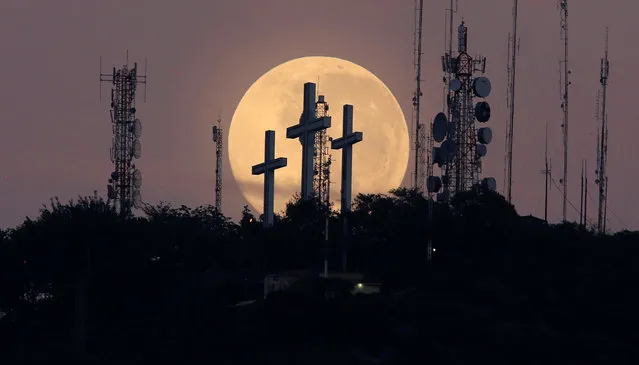
The full moon is seen behind the hill of the three crosses in Cali, Colombia,September 17, 2016. (Photo by Jaime Saldarriaga/Reuters)
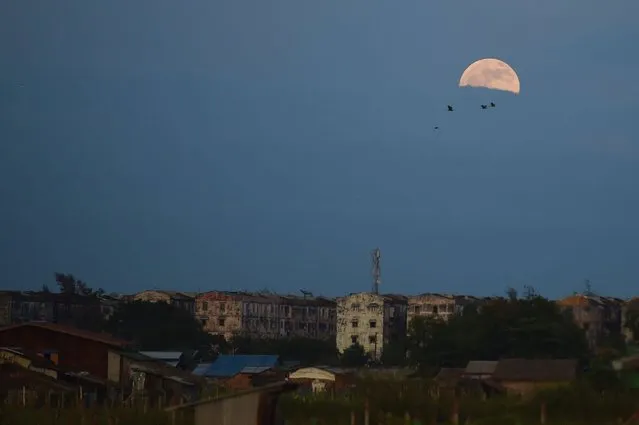
The full moon is seen from Yangon, Myanmar on September 16, 2016. (Photo by Ye Aung Thu/AFP Photo)
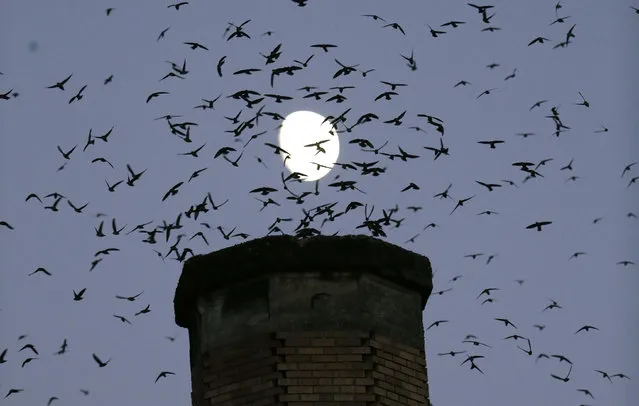
In this Tuesday, September 13, 2016 photo,tThe moon is visible in the background as a multitude of migratory Vaux's Swifts flock to roost for the night inside a large, brick chimney at Chapman Elementary School in Portland, Ore. Numbers of Vaux's Swifts are in decline, in part scientists say because of the destruction of the brick chimneys that they use to roost during their annual fall migration. (Photo by Don Ryan/AP Photo)
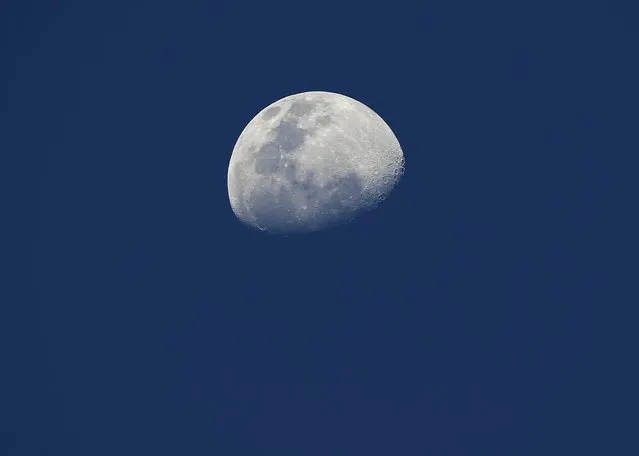
The moon is from Cordoba, Argentina, on October 11, 2016. The moon is bombarded by so much space rock that its surface gets a complete face-lift every 81,000 years, according to a study released Wednesday based on NASA data. This churn – affecting the top two centimeters (nearly an inch) of mostly loose moon dust – happens 100 times more frequently than previously thought, scientists reported. The study also estimates that asteroids and comets crashing into Earth’s only natural satellite create, on average, 180 new craters at least 10 meters (33 feet) in diameter every year. (Photo by Juan Mabromata/AFP Photo)
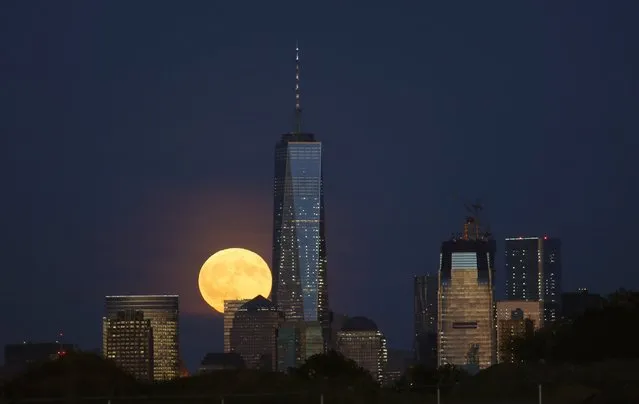
A harvest moon rises behind Lower Manhattan and One World Trade Center in New York City, September 16, 2016 as seen from Newark, New Jersey. (Photo by Gary Hershorn/Getty Images)
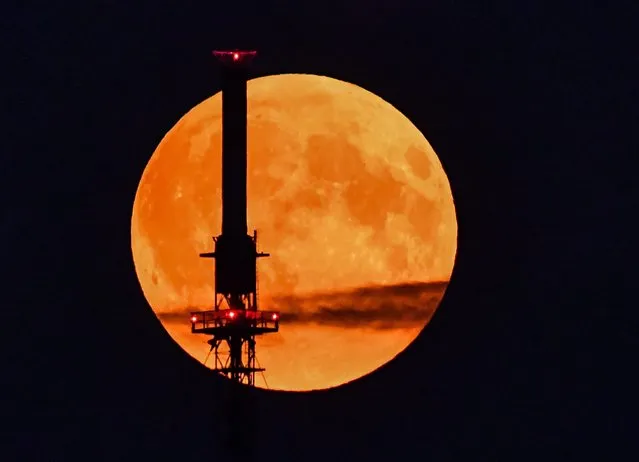
A reddened harvest moon is pictured behind a radio mast standing near Replin, Germany, late 16 September 2016. A penumbral lunar eclipse accompanied the harvest moon about a week before the autumnal equinox. (Photo by Patrick Pleul/EPA)

The Harvest moon rises behind St Michaels Mount in Cornwall, UK on 16th September 2016. (Photo by Simon Maycock/Alamy Live News)
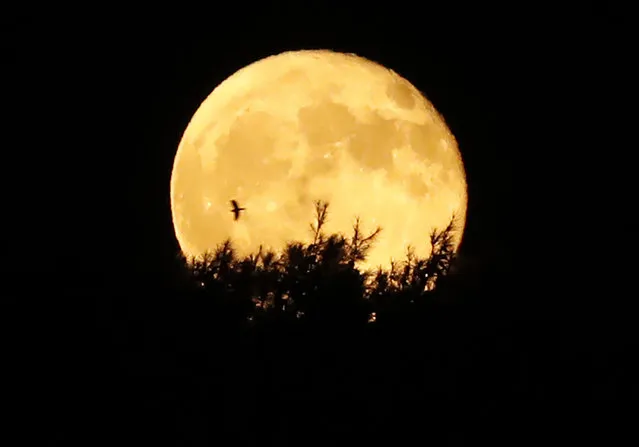
The silhouette of a tree and a bird are seen against a full moon in the city of Jerusalem on September 17, 2016. (Photo by Thomas Coex/AFP Photo)
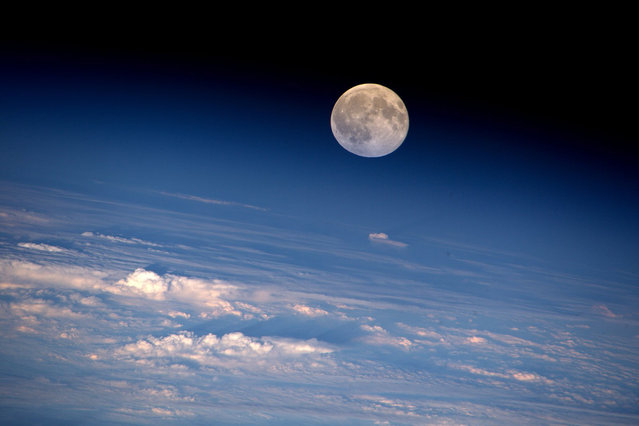
This week's full Moon as photographed from on board the International Space Station by NASA astronaut Jeff Williams on August 19, 2016. Jeff is currently Commander of the Space Station for the Expedition 48 crew. (Photo by Jeff Williams/NASA)
13 Oct 2016 11:48:00,
post received
0 comments
